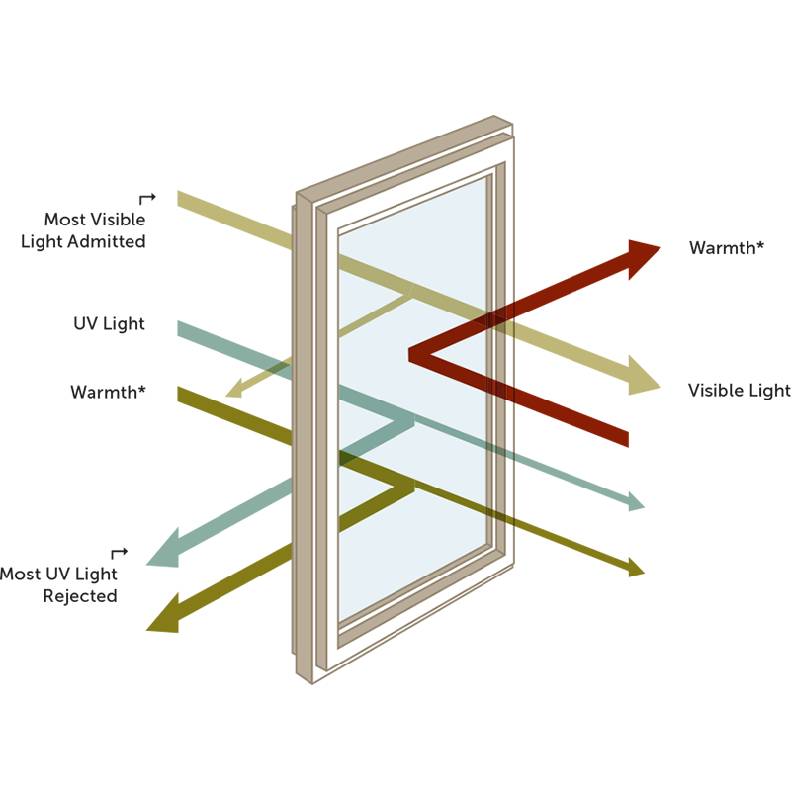The Evolution and Benefits of Low Energy Glass
Low energy glass, also known as energy-efficient or insulated glass, is a modern marvel that has revolutionized the way we construct and inhabit buildings. This innovative material is designed to minimize heat loss from a building while reducing the amount of energy needed for heating and cooling.
The concept of low energy glass revolves around its unique ability to trap air between two or more layers of glass, creating an insulating barrier. This trapped air acts as a cushion that impedes the transfer of heat through the glass, thereby maintaining a more consistent temperature inside the building. In essence, it works like a thermos for your home, keeping the warmth in during winter and the coolness in during summer.
One of the primary benefits of low energy glass is its contribution to energy conservation. By reducing the need for artificial heating and cooling, these windows significantly cut down on energy consumption, leading to lower utility bills and decreased carbon footprints. They are particularly advantageous in extreme climates where the temperature variation between indoors and outdoors is substantial.
Moreover, low energy glass offers enhanced comfort by preventing drafts and cold spots near windows
Moreover, low energy glass offers enhanced comfort by preventing drafts and cold spots near windows

Moreover, low energy glass offers enhanced comfort by preventing drafts and cold spots near windows
Moreover, low energy glass offers enhanced comfort by preventing drafts and cold spots near windows
 low energy glass
low energy glass. It also provides a noise reduction feature due to its thick, layered structure which can lead to a quieter, more peaceful living environment. This type of glass often comes with a special coating that can block harmful ultraviolet rays, protecting both the interior furnishings and occupants from the sun's damaging effects.
The manufacturing process of low energy glass has evolved over the years, incorporating various technologies such as thermal breaks, argon gas fills, and improved sealants to further enhance insulation properties. As a result, contemporary low energy glass units are not only more efficient but also more aesthetically pleasing, coming in different designs, sizes, and styles to complement any architectural design.
In conclusion, low energy glass represents a significant advancement in building materials technology. Its ability to provide thermal insulation, reduce energy costs, and improve overall comfort has made it an essential component for sustainable and green architecture. As the world continues to seek solutions for energy efficiency and environmental preservation, the importance of low energy glass will undoubtedly continue to grow, shaping a future where our living spaces are smarter, healthier, and more harmonious with nature.


 Moreover, low energy glass offers enhanced comfort by preventing drafts and cold spots near windows
Moreover, low energy glass offers enhanced comfort by preventing drafts and cold spots near windows
Moreover, low energy glass offers enhanced comfort by preventing drafts and cold spots near windows
Moreover, low energy glass offers enhanced comfort by preventing drafts and cold spots near windows low energy glass. It also provides a noise reduction feature due to its thick, layered structure which can lead to a quieter, more peaceful living environment. This type of glass often comes with a special coating that can block harmful ultraviolet rays, protecting both the interior furnishings and occupants from the sun's damaging effects.
The manufacturing process of low energy glass has evolved over the years, incorporating various technologies such as thermal breaks, argon gas fills, and improved sealants to further enhance insulation properties. As a result, contemporary low energy glass units are not only more efficient but also more aesthetically pleasing, coming in different designs, sizes, and styles to complement any architectural design.
In conclusion, low energy glass represents a significant advancement in building materials technology. Its ability to provide thermal insulation, reduce energy costs, and improve overall comfort has made it an essential component for sustainable and green architecture. As the world continues to seek solutions for energy efficiency and environmental preservation, the importance of low energy glass will undoubtedly continue to grow, shaping a future where our living spaces are smarter, healthier, and more harmonious with nature.
low energy glass. It also provides a noise reduction feature due to its thick, layered structure which can lead to a quieter, more peaceful living environment. This type of glass often comes with a special coating that can block harmful ultraviolet rays, protecting both the interior furnishings and occupants from the sun's damaging effects.
The manufacturing process of low energy glass has evolved over the years, incorporating various technologies such as thermal breaks, argon gas fills, and improved sealants to further enhance insulation properties. As a result, contemporary low energy glass units are not only more efficient but also more aesthetically pleasing, coming in different designs, sizes, and styles to complement any architectural design.
In conclusion, low energy glass represents a significant advancement in building materials technology. Its ability to provide thermal insulation, reduce energy costs, and improve overall comfort has made it an essential component for sustainable and green architecture. As the world continues to seek solutions for energy efficiency and environmental preservation, the importance of low energy glass will undoubtedly continue to grow, shaping a future where our living spaces are smarter, healthier, and more harmonious with nature.